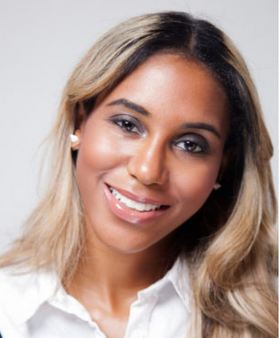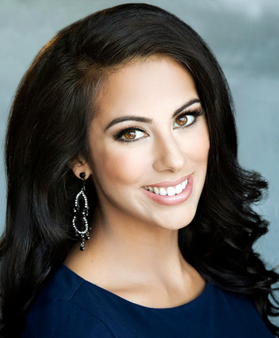Build Digital Journalism and Broadcasting Skills
NYFA’s 8-Week Broadcast Journalism Workshop trains students in the fundamental principles of contemporary broadcast journalism, cross-platform nonfiction video, and digital production, teaching them how to apply narrative storytelling to the news.
During their time at NYFA, students work in the classroom and on-location, learning to produce their own news stories through a range of hands-on projects.
Workshop DescriptionWorkshop Name: 8-Week Broadcast Journalism Workshop
In the 8-Week Broadcast Journalism Workshop, students get an introduction to digital journalism, learning to produce their own news projects from start-to-finish. Throughout the program, students gain practical technical and creative skills through hands-on training, shooting their news segments with single-camera set-ups and editing using industry-standard software. To learn how to fill the role of MMJ (multimedia journalist) in a fast-paced, professional environment, students tackle a range of responsibilities, such as identifying and making arrangements for their subjects, choosing and securing locations, preparing equipment, arranging the preparation and setup of the locations, and making final technical checks.
In addition to completing newsworthy projects for their reel, students also learn vital transferable skills in communication, research, narrative storytelling, personal branding, and writing, teaching them how to effectively present their work and build an on-camera persona. The workshop is a great fit for a student with an interest in digital journalism or a professional looking to enhance their skills in multimedia, social media, and content creation.
NYFA also offers the possibility to learn broadcast journalism from anywhere through a variety of online broadcast journalism workshops.
To learn more about NYFA’s workshops, see NYFA’s Course Catalog or request more information.
Class Details
Broadcast Journalism
Students learn how to create elements that are essential to the production of digital news programs: the VO (Voice Over), the news package, the interview profile and the long-form story. They also are taught how to create a career-building resume reel. Later students gain experience working with their own smartphone cameras, using third-party software to give their phones the type of video controls found on HD cameras. Smartphone cameras are far less intrusive than traditional video cameras, and are increasingly being used even in legacy media production. An understanding of, and an ability to create these elements are central to success as a digital journalist. Students learn some of the most basic concepts of journalism, as in the distinction between those who actively report the news (reporters, producers, cameramen/women), and those who comment and analyze news events (columnists, bloggers, citizen journalists). They come to understand the difference between “news” and “opinion.” Emphasis is placed on becoming Multimedia Journalists (MMJs), who can produce, report, shoot, write, narrate and edit their own stories, and how these skills are applicable in a wide range of news genres including national news, local news, sports news, lifestyle and fashion news, technology news and more. Through practice, students come to appreciate powerful visual storytelling, using the camera as a reporting tool, and appreciating the power of composition and motion. Students also learn to write clear evocative copy, which reflects a deliberate, and easy-to-follow story structure, but is also succinct. Students are prepared for the job market through an overview of the evolution and changing nature of news. The concept of digital journalism is explored, with special attention paid to the convergence of journalism and technology, the tools used by digital journalists, the potential and limits of various distribution platforms, and the digital journalist’s relationship to news organizations. Central to all these efforts is an emphasis on journalistic ethics and the production of balanced, evidence-based stories.
Hands-on Camera
In this course, students learn firsthand the skills required to be a successful digital camera operator. Students immediately start training on a camera that incorporates many of the features associated with high-end high definition (HD) cameras, but its relative ease of use makes it understandable to novice digital journalists. Students get their first hands-on experience with a camera on the second day of classes. This allows students to begin shooting footage almost immediately, putting into practice lessons learned in Broadcast Journalism class. Instructors emphasize a holistic approach to video making, stressing that shooting entails a number of related skills. Students are also taught basic sound recording, including choice of the right type of microphone and simultaneous recording of multiple audio tracks. All of this allows students to better understand both the theory and practice of digital video making.
Digital Editing
Editing is one of the most fundamental skills in a content creator’s toolbox. This course seeks to encourage students to analyze media, and to discuss it on an intellectual level by understanding and using the editing tools most commonly employed in broadcast news editing, digital journalism and documentaries. While the class will place emphasis on student’s understanding and use of editing software, students will also discuss editing theory and techniques, so that they may understand not only the “how-to” of editing but also the “why.” Topics considered include: understanding the impact of editing, the ability to organize media efficiently for edits (“workflow”), the ability to select useful sound bites quickly, understanding how to structure primary storylines in post-production, the selection of complimentary b-roll footage, how to become comfortable using industry standard digital editing software, the ability to edit quickly and work within tight deadlines, and methods to export media to the web as well as other destinations. The final element of the course is editing a resume reel that best demonstrates the student’s talents, abilities and potential.
Production Workshop
Working under the supervision of New York Film Academy staff members, students have the opportunity to test their production skills in the classroom prior to going out to shoot, and then edit, field assignments. The goal is for students to gain confidence in their abilities, while at the same time confronting and correcting the basic mistakes common to beginners. The Production Workshop classes take place within the context of Broadcast Journalism assignments.
TIMES AND BREAKDOWN BY WEEK
This workshop has full-time hours, and is held during the day at our NYFA New York campus.
PROGRAM AND SOFTWARE REQUIREMENTS
This course requires the following software and equipment:
- External hard drive (generally costs $30-$200)
- An SD Card
17 Battery Place
New York, NY 10004
In the 8-Week workshop, students deliver a variety of projects for viewing and critiques, learning through a rigorous progression of real world projects. These projects may include a Voiceover project, a News Package, an Interview Profile, a Long-Form Story and a Resume Reel. To learn more, visit our projects page.
Please note: Equipment, curriculum, and projects are subject to change and may vary depending on location. Students should consult the most recently published campus catalog for the most up-to-date curriculum.



